Existing User Log In
New User Registration
Register for a free account to gain full access to the VGChartz Network and join our thriving community.



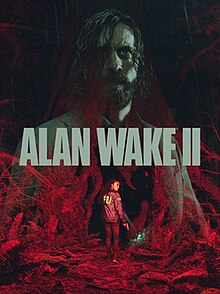

America - Front


America - Back

Remedy Entertainment
Action-Adventure
 (Add Date)
(Add Date) (Add Date)
(Add Date) (Add Date)
(Add Date)
| Owners: | 0 |
| Favorite: | 0 |
| Tracked: | 0 |
| Wishlist: | 0 |
| Now Playing: | 0 |
Reviewer's Note: Although I do my best to avoid SPOILERS, I will mention story details that I liked or disliked in this review, albeit as vaguely as possible. Read on at your own risk.
Some said it'd never happen. Finally seeing the light of day in 2010 after a stretched development cycle, Alan Wake released with only a couple subsequent episodic expansions and a lower-budget spin-off, Alan Wake's American Nightmare, before being relegated as an Easter egg. Fast-forward several years later, our titular tweed-jacket-wearing novelist reaches out beyond the void, The Dark Place, to… another Remedy original title? While integrating him within this newly-minted shared universe was an intriguing gesture, and carries wonderful implications for the future, it would never feel the same as a new mainline sequel. To finally see Alan Wake II emblazoned on a title screen with big bold letters emphasizes the saying "great things come to those who wait."
For someone named in the title screen, it's rather peculiar that he has to wait behind two other people before playing him. After an uncomfortable and revealing opening as a mysterious secondary character to establish tone, you step into the shoes of FBI Agent Saga Anderson. Along with her partner, Alex Casey, Saga is drawn to a grisly ritualistic murder done near Cauldron Lake, found in Bright Falls, Oregon. As with the game's development timeline, 13 years have passed since the original's conclusion, but Wake's influence is immediately felt when one of his discovered manuscript pages perfectly details Saga's own experiences. Despite spinning all normal & rational thinking on its head, she's drawn to uncover this story that seemingly defies reality, while Wake navigates a way out of his supernatural prison and stop his dark half, known only as Mr. Scratch.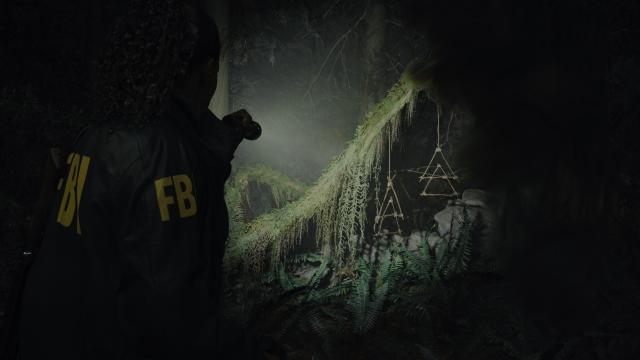
Admittedly, a dual-protagonist structure seemed like an odd emphasis at first – especially with Saga owning the first couple of hours. When considered in the grand scheme, she's a great expositional bridge for anyone who missed out on the original (a true shame) or who may have forgotten the finer details since. With an expanding rolodex of names, places, and events connected to Bright Falls' history and the cult's recent murder, Saga's Mind Place collects all the main story and secondary cases into a central hub. With a quick push of the Back button, you're whisked to her interior, which has taken the shape of a hotel lodge. With a filing cabinet of disparate cases and a corkboard disinterring acquired evidence, her means of on-ramping info is a bit protracted but also informs her characterization and process of deduction in clever ways.
Another change up is one of sub-genre. The third-person shooter fundamentals remain intact: use a flashlight to burn away a Taken's dark shield before shooting them to death. There's the added bonus of glowing weak spots for some foes, resulting in gory squibs, but your target is center mass or head anyways. The original's self-coined "psychological action thriller" has transitioned into survival-horror akin to Capcom's Resident Evil 2 Remake. Now, the camera is closer to Saga or Alan's shoulder, movement speed is deliberately slower, and resource management plays a bigger role. Even if the combat rhythm remains intact and satisfying, the difference in design ethos makes these scenarios implicitly different.
One stark difference is what I’ll call "charge-based battery usage." Before, burning off the Taken's atramentous aura had more flexible rules: the torch's light would do some damage, but focusing the bulb in exchange for battery life would slow them down. There was a give-n-take in weighing distance, enemy count, and more while managing battery juice similar to a regenerative mana meter. Here, both Saga and Alan's flashlights operate on charges - three-second windows of directly focusing the beam at the cost of a battery quarter. If you keep that beam on them, you're oftentimes burning their shadow away with one usage. If too imprecise, you'll burn through the limited stock of batteries and have to expend valuable secondary items, such as handheld flares, flashbangs, and flare gun rounds (equivalent to RPG rockets here). On Nightmare difficulty, this system's item frugalness creates incredible tension.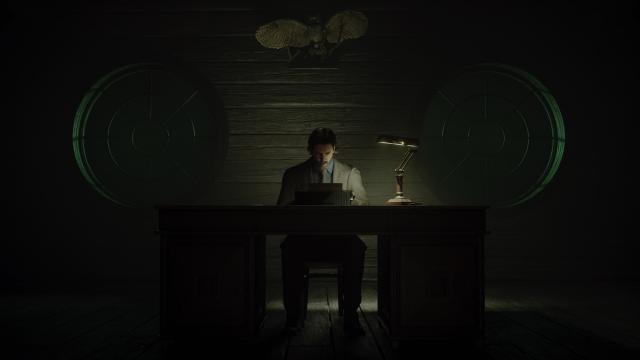
While Saga navigates both this case and paranormal events in Bright Falls, The Dark Place has turned into a nightmarish version of New York City for Wake to navigate. Having written in circles for years, he's just now beginning to grasp a way out by extracting new plot threads across different areas. He's – sadly – lost the dashing tweed jacket combo in exchange for a more standard suit, a leather tote bag, and a magical art-deco lamp able to shift reality by absorbing or giving light to unique spots. His primary means of traversing this noirish landscape are navigational puzzles where he spends or saves lamp charges. The dark, perpetually-wet overworld is also populated with Taken ghosts, transparent humanoid silhouettes with their distorted voices barking into the void. You're never sure if they’ll pop into existence and actually attack without getting up close or spending battery charges – another risk/reward system to make you worry about limited supplies.
Despite their separation, both protagonists are linked beyond Wake's manuscript pages. Like Saga's Mind Place, Alan's Writer's Room (also entered with the Back button) tabulates certain collectibles and has its own corkboard. This shared diegetic mental space remains one of 2023’s most fascinating designs because of how it thematically informs their disparate backgrounds: Saga has a flowchart to gather evidence she knows to be true whereas Alan reshapes reality according to his fiction. Within specific portions of each level, a simple word change on Alan's Plot Board will fundamentally shift everything in real time; with some technical trickery, a simple auditorium transmogrifies into an epicenter of ritualistic sacrifice with gallons of blood strewn every which way. Most save rooms also enable you to hop back and forth between both characters at any time, which feels like its own reward in exploring either reality at your leisure.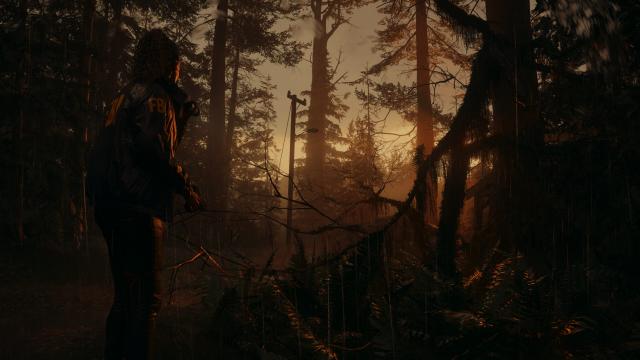
The way these macabre scenes and both protagonists interface with each other works so well thanks to modern technology and the Northlight Engine. It’s safe to assume Remedy didn’t score the funds equivalent to prominent AAA studios, but that’s damn tough to spot outside of some minutiae. The way real-time footage is incorporated, either as a superimposed image within the world or real-time cutscenes, is consistently done through such inventive means. Similar to Control’s weird visual distortions, there’s always this sense of an unclean image, like a car’s headlight glare through a rain-soaked window. From the dense overcasts and dark-orange skies in Bright Falls to the neon-lit alleyways in The Dark Place, every environ captures this moody atmosphere. Something as simple as teleporting from a dense forest to a train station, as though one's bleeding into the other, feels so ensorcelling because of its strong artistic direction.
Of course, its cinematic predilections come with some drawbacks. Sauntering – or light jogging – portions take up a solid chunk of its 15-hour standard runtime (over 20 for completionists); even with resource-hunting and pleasantly-fun puzzles off the beaten path, it still could’ve been trimmed down. But any potential "walking sim" accusations, along with its abundance of trans-media extras, don't really sap enthusiasm when their inclusion feels like it was properly interrogated. There are rare missteps under that subjective analysis, but most still feel purposive in capturing these weird worlds. There's a strong understanding of how each idea, from end-chapter tunes to silly television ads, contributes to its idiosyncratic personality.
Maturity is a good way to summarize Remedy's design philosophy. Despite leveraging an explicit M rating, how violence is communicated feels unnerving without being shlocky exploitation. Although they could've been slightly reduced, most jump scares are actually effective in both precision and intention. Despite the telltale signs of upcoming action encounters, it's easy to hanker for each one because of stretched-out buildup and suspense; maybe a few more could've been incorporated on the golden path, but it still speaks to a confidence in tempering oneself compared to the original. There's opportunity to improve the formula, from its light Metroidvania world design to combat frequency, but it earns a space with past greats who've undergone similar sea changes in design.
The gameplay has altered, but Alan Wake's zany writing remains the same. The constant tension of the world's illogic gets even stranger when considering this in light of the Remedy Connected Universe. Like Saga, that's naturally folded in ways that complement the wider world. Once past a couple of awkward lines with her, there's a natural intrigue to understand more about her motivations and how she and Alex Casey fit into Wake's story. While that does demand some tedious back-n-forth when connecting dots on her deduction board, the payoffs to staying involved feel worth it.
It's also a blast to simply enjoy the ride while Writer/Director Sam Lake & co. tell the "most meta" narrative I've seen in games. What started as an interesting sneak preview in Control: AWE has now spiraled into one of the wildest meta-textual explorations of Remedy's complete oeuvre of action titles. Self-referential gags like Alex Casey also being the name of Alan Wake's long-standing detective protagonist, who has the face of Sam Lake and the voice of James McCaffery (like the original Max Payne), don’t feel desperate for attention moreso than feeling like the natural culmination of a studio's history. What may sound pretentious as first blush is actually instrumental to its creative energy. Before, Max Payne would break the 4th wall with something like the TV programs playing in the background or an errant line; now, Alan Wake II has no walls and the roof and floor are made of glass. How that's woven with solid character drama and a save-the-world plot is anyone's guess, but somehow it sticks the landing with top marks.
A handsome share of credit stems from the game's presentation too. In a year when Capcom sanded away some of Resident Evil 4's original personality in the otherwise-beloved remake, it's nice that Alan Wake II effusively indulges in the inherent goofiness of reality-bending scenarios and Lynchian affectations, shown by the impressively-deep cast. It's the type of weird big-budget title where you can complete a late mission and simply watch a full 20-minute Finnish arthouse film that's poking fun at a secondary character. Having the temerity to craft so much optional side content, including original songs, radio plays, and more, is simply wild to think about.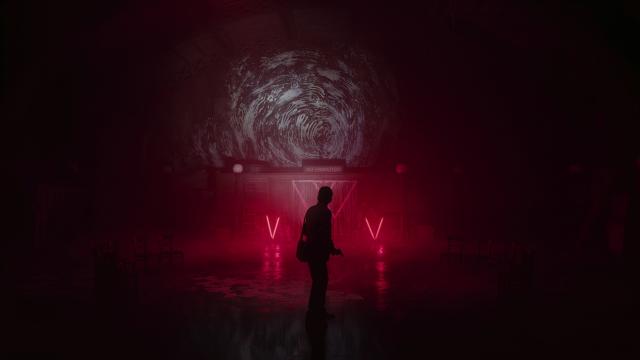
One peculiar story snag is the ending and subsequent response to it. The original's finale suggesting a deeper rabbit hole continues here, but it also feels misplaced in this context. It's also strange to dance around as well, because around the time of starting my playthrough, the Final Draft update released which included a New Game+ mode, more story extras, and a different ending. I haven't played through it (yet), given the demands of putting in another 15+ hours back-to-back. While it opens different dilemmas about game storytelling, it's also tougher to harshly judge this move considering its inclusion thematically marries with Alan Wake's whole concept of writing himself out of trouble. Leave it to Remedy to go meta with its post-release content.
By gleefully lifting from its past, Remedy finds the perfect sweet spot between old and new concepts to make Alan Wake II into something truly special. The team's tendency to utilize different mediums is expanded to greater degrees here, resulting in one of the wildest narratives in recent memory. The new inclusions of dual protagonists and a design shift to survival-horror will surprise longtime fans, but their implementation leads to some of the most intriguing game design in a recent blockbuster. And despite indulging in a few big-budget trappings along the way, it captures an energy and style no one else can dare replicate.
Contractor by trade and writer by hobby, Lee's obnoxious criticisms have found a way to be featured across several gaming sites: N4G, VGChartz, Gaming Nexus, DarkStation, and TechRaptor! He started gaming in the mid-90s and has had the privilege in playing many games across a plethora of platforms. Reader warning: each click given to his articles only helps to inflate his Texas-sized ego. Proceed with caution.









